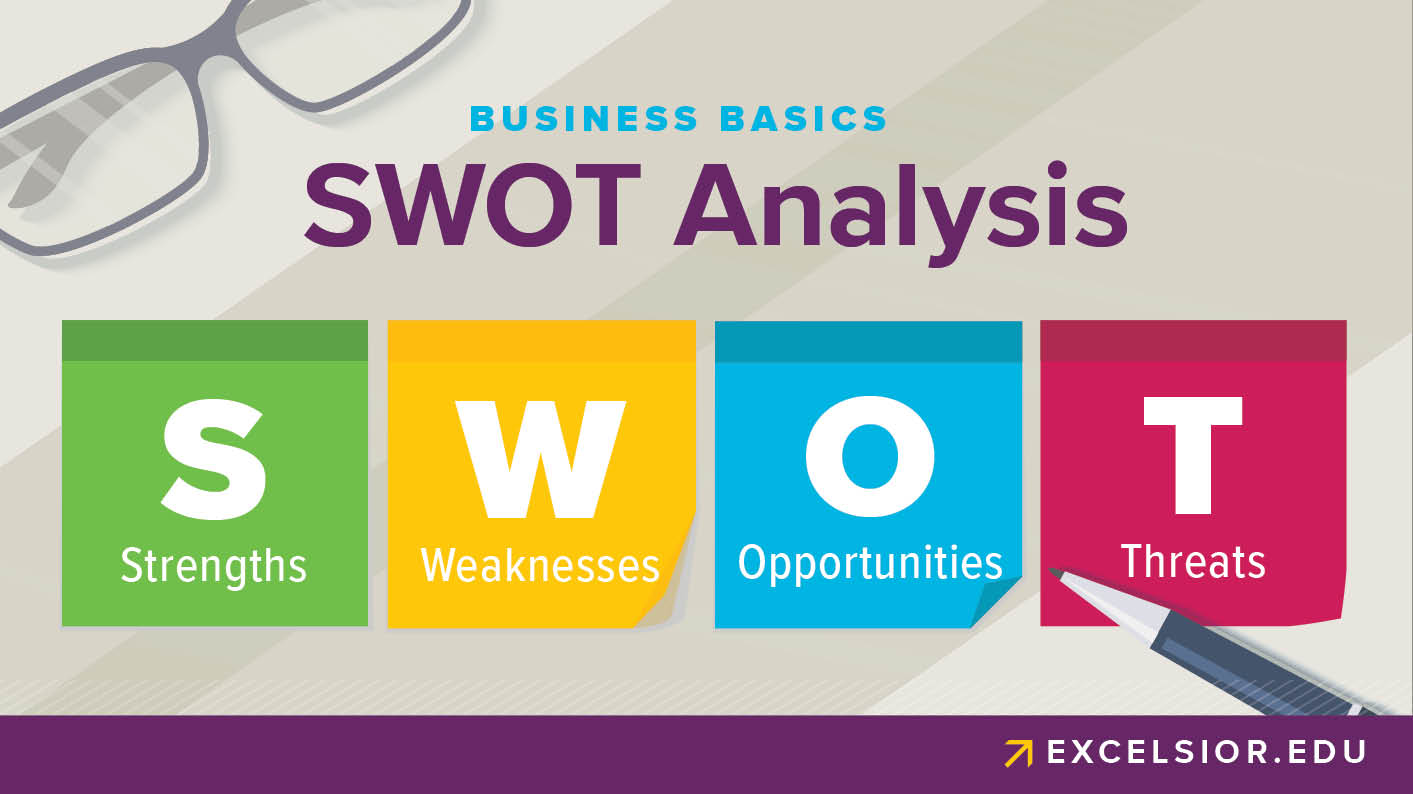Business Basics: Using a SWOT Analysis

Amazon uses its strength in e-commerce and cloud computing to dominate online sales of books and other products; Google identified an opportunity in online advertising and now generates billions of dollars in ad revenue every year; and Apple and Samsung counter the threat from each other’s businesses as they fight a daily battle for global smartphone sales. In each of these businesses a SWOT analysis would have been used to shape the strategy of the organization and to reach an informed decision about what direction the company should take.
Why Is the SWOT Analysis Important?
The SWOT analysis is a vital component of every business course, both at the bachelor’s and MBA levels, that any student or manager needs to know. At its simplest, the SWOT analysis allows the manager to understand the strengths of the organization and match them to the opportunities in the wider business environment. It also helps the manager identify weaknesses that need to be addressed and/or threats to future growth. The SWOT analysis looks at the wider environment in which the organization operates to help a business focus upon priorities and identify a way forward.
But despite the simplicity of the SWOT—whether the business is considering new opportunities or trying to understand the threats to its future growth—it is also one of the most powerful decision-making tools available to the modern manager. There is also a tool called the TOWS matrix, which is just a variant of the SWOT analysis and uses the same components.
What Role Does a SWOT Analysis Play in Developing a Business Strategy?
A SWOT analysis plays an important role in developing a business strategy. First, the organization scans its macro-environment (the broader business environment) comprising the political, economic, social, and technological factors that impact the organization and representing the external factors over which they have little influence. A change of government, for example, might mean the loss of jobs from the cancellation of a defense contract. Second, the organization gathers information from its micro-environment, or the specific context in which the business operates: competitors, customers, suppliers, and other key stakeholders.
How Can Data Be Organized Using SWOT Analysis?
Data resulting from macro- and micro-environmental scanning, can then be analyzed using the SWOT analysis to categorize and then prioritize the organization’s options. Strengths are internal to the organization. They are the internal capabilities of the business and represent the core skills of the organization. For example, with Apple, it is design; with Google, it is online search. Weaknesses are the internal limitations of the organization. Perhaps the organization lacks the IT infrastructure to develop a new app, or the absence of the right expertize prevents the company from expanding overseas. Opportunities are the things in the external environment that the organization can take advantage of, such as a different market for an existing product, or an innovative new business model. Threats are from the external environment, perhaps a competitor moving in on a best-selling product or new legislation that requires a change to the way we do business.
What Does an Organization do with Information from a SWOT Analysis?
Having identified the relevant SWOT elements, the organization will engage in either a “matching” or “converting” strategy to utilize the results of the analysis. A matching strategy is where a business
matches its strengths to a corresponding market opportunity. For example, Amazon realized that its strengths in online retail allowed it to gain a competitive advantage in other products beyond books. Alternatively, a converting strategy allows the business to convert threats into opportunities and weaknesses into strengths. A business that lacks an overseas sales presence, for example, might buy a local company and gain a team of experts in a market that was previously underserved.
How Will a SWOT Analysis Help Me as a Future Manager?
Ultimately, a SWOT analysis remains one of the simplest and most powerful aids among the many strategic business tools available. Successful businesses need to make priorities and make decisions based upon the available data, and that is exactly what the SWOT analysis allows the organization to do. The temptation for students and inexperienced managers is to list as many factors under each heading as they can think of, but to be effective it is important to identify the top three or five factors and then place them in ranked order. It is in identifying the most important opportunity, or the most pressing threat, that makes the SWOT so indispensable.
Top companies develop competitive advantage from understanding the opportunities and threats in the marketplace and from identifying where their strengths and weaknesses are. The ability to develop and analyze a SWOT analysis and make informed decisions based upon the results allows you to develop a strategic perspective that will benefit you in a range of different organizations and help you in whatever career path you choose.


